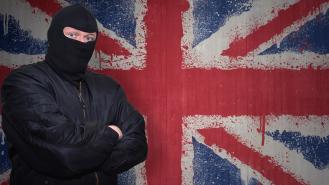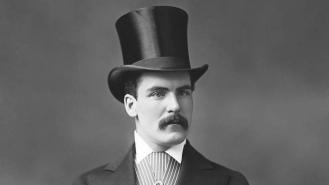
4 vintage gangsters from British history
Britain’s gangster world wasn’t just the notorious Kray Twins of the 1960s but also gangs made up of con artists, robbers and fraudsters who flourished as far back as the 17th century.
1. The Forty Elephants – Edwardian Girl Gang
Consisting entirely of women, the Forty Elephants (also known as Forty Thieves) initially operated in the Elephant and Castle area of London. They started a lucrative criminal business by shoplifting or masquerading as housemaids for wealthy families who they robbed. Allied with a rival gang led by the McDonald Brothers, who they worked with side-by-side and in some cases married, the female thieves raided quality stores in the West End and later all over the country.
During the early 20th century, the gang was led by Alice Diamond who became known as the ‘Queen of the Forty Thieves’, adopting sobriquets such as ‘Diamond Annie’. Keeping a low profile, they managed to operate for 80 years from 1873 to the 1950s.
The Elephants took advantage of the morals of the day, walking into stores wearing heavy coats and skirts with hidden pockets. If suspected of shoplifting, the staff of the shops and police were too prudish to search them. Those caught only spent a few months in jail.
During the gang’s heyday in the 1920s, they threw lavish parties and embraced the burgeoning ‘flapper girl’ lifestyle.
2. William ‘Billy’ Kimber and his Brummagem Boys
By the early 20th century there were gangs across Britain associated with racecourse betting, which was the only legal form of gambling at the time. One of the most notorious was The Brummagem Boys, or ‘Brummie Boys’, operating from the north of England to London in the 1910s to the 1930s.
They began their nefarious trade as pickpockets, who would beat up their targets if they couldn’t get money off them. Their sinister leader was William ‘Billy’ Kimber, a ‘Brummie’ himself, who was liked by locals but known not to be crossed. Kimber’s thugs targeted the bookies, charging them for everything from their stalls to the chalk they used on their blackboards. His activity became so notorious that he appeared in the popular British drama Peaky Blinders.
The Flying Squad, an experimental brand of the Metropolitan Police Service, was brought in to try and stamp out the activity of Kimber’s gangs. However, it was the bookmakers themselves who started up their own protection association that gradually saw a decline in racketeering.
After relocating to Arizona and Chicago in 1927 and associating with Al Capone, Kimber returned to England and became a respectable bookmaker in Torquay. Ironically, he became a leading figure in the Bookmakers Protection Association, the very body which had ended his racecourse rackets.
3. Charlie ‘Darby’ Sabini – Godfather of North London
One of the most powerful criminal gangs in London during the inter-war years was run by the Anglo-Italian Sabini family. The gang was led by Charles ‘Darby’ Sabini who made an alliance with Italian and Jewish bookmakers to ward off challenges from rivals, such as the Hoxton Mob and the Italian Cortesi Brothers.
Sabini became ‘king of the racecourse gangs’ in London and the ‘Godfather’ of the city’s Little Italy, dominating London’s underworld during the 1920s. Like Birmingham’s Billy Kimber, he is also portrayed in Peaky Blinder. Sabini’s clashes with opponents culminated in a violent brawl on Waterloo Road in 1927 where eight men were killed. The incident brought too much police attention and Sabini’s power slowly dwindled as his brother, Harry, assumed a leadership role.
During WWII, after Italy joined the war against Britain, the brothers were arrested as ‘enemy aliens’, interrupting the gang’s criminal activities. By the time they were released, their status as kings of the underworld was surpassed by a new generation of gangsters.
4. Billy Hill - The King of the Black Market
During the London blackouts of WWII, a crime spree took off as criminal gangs took advantage of the dark streets. A young William ‘Billy’ Hill honed his career in crime through a violent one-man protection racket, using a knife to slice his signature V-sign on his victims’ faces. The burgeoning black market of the 1940s was the perfect foundation on which to build his empire. Storing goods in warehouses, Hill diversified his skills by starting to forge documents. Running his crime empire like a corporation, he started targeting post offices across London and attacking the company’s vans. Hill’s smash-and-grab crimes earned him the equivalent of £20,000 a week.
After a botched robbery put Hill behind bars in 1940, he returned to the streets and initiated a new era of organised crime, becoming the ‘King of Soho’ in the process. In 1952, Hill carried out the East Castle Street robbery on a post office van with the modern value of £7 million.
After expanding his criminal activities overseas, Hill returned to Britain and initiated a turf war against a former partner, the East End gangster, Jack Spot. Hill escaped a violent end and died aged 72 in 1984.







